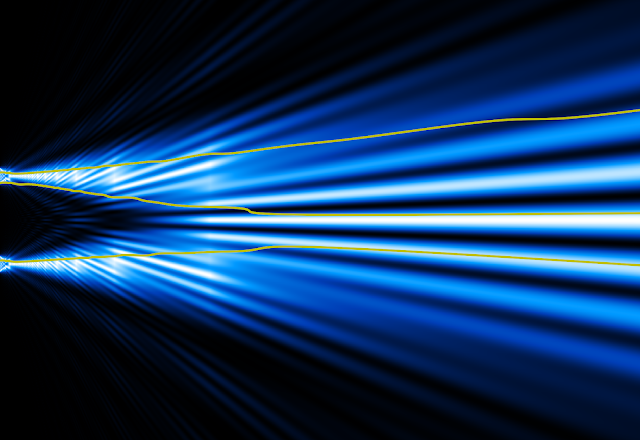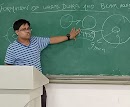Basic Theories
Wave function Explained !!! Symmetric and antisymmetric wave function in detail!!! Cornerstone topic for Quantum Mechanics
Erwin Schrodinger was an Austrian
physicist, who is famously known for the Schrodinger’s equation, a cornerstone
equation in modern quantum mechanics. In 1925, he adjusted de Broglie’s
inaccurate theory and added a so-called wave function to ever quantum object.
The wave function is a mathematical
function in which all the properties every quantum object are stored. Here
properties refers to different parameters like position and momentum.
A wave function is denoted by Greek
letter psi Ψ.
 |
| Wave function variation with respect to principal quantum number n |
So, what was the problem with de
Broglie’s theory??
De Broglie perceived the wave as a
physical object while Schrodinger’s wave function is merely abstract. Broglie
didn’t added the properties we above discussed which were added by Schrodinger.
Wave function becomes very important
concept when we are discussing about the phenomena like quantum superposition.
In quantum world, we can witness such bizarre consequences and phenomena which
are completely out of the world of our common sense and often very difficult to
believe.
Types of Wave function:-
Wave function can be briefly categorised
in two categories:-
1) Symmetric Wave Function
2) Antisymmetric Wave Function
While discussing this topic we should
keep in mind that in quantum world or micro-world, we can say that an
elementary particle or a subatomic particle is “indistinguishable” or “same”.
There is no way in which you can refer that an electron is different from other
electron.
In this quantum world, the words like
“indistinguishable” or “same” or “symmetric” have completely different meaning.
Let understand this with an example.
Suppose you have two identical particles
but described by two different wave function, name it as WAVEFUNC (1) and WAVEFUNC
(2).
Now, you want to describe it as a
single wave function as WAVEFUNC (1, 2)
But what happens if we swap the
particles and represent them as a combined wave function as WAVEFUNC (2, 1)???
We should not observe any changes and
the system should look exactly same. One can achieve that if WAVEFUNC (1, 2) is
identical to WAVEFUNC (2, 1).
In some cases like in the case of
fermions, it may happen that the wave function changes its sign after swapping.
This type of wave function is called as antisymmetric wave function. Then
equation looks like,
WAVEFUNC (1, 2) = - WAVEFUNC
(2.1)
But in some cases like in the case of
bosons, the sign remains same. This type wave function is called as symmetric
wave function and equation looks like,
WAVEFUNC (1, 2)
=WAVEFUNC (2.1)
So, we can represent the final
equation as,
WAVEFUNC (1, 2)
= ± WAVEFUNC (2.1)
To know more about bosons and fermions click here......
To know basics of quantum world, astronomy and space exploration you can check out my book "Through the wormhole" on amazon kindle.
Thanks for Reading!!!
-Ratnadeep Das Choudhury
Check out my other blog posts!!!
Don't forget to share this post in your social media handles to enrich everyone's knowledge!!!
Also for latest updates of my posts join me on Twitter
See you Again!!!!!
-Ratnadeep Das Choudhury
Founder and writer of The Dynamic Frequency












0 Comments